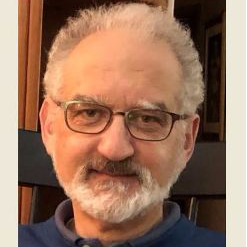Spin-dependent Optical, Plasmonic, Confinement and High-frequency Phenomena and Applications—Mini-symposium, ETOPIM11
A special issue of Crystals (ISSN 2073-4352).
Deadline for manuscript submissions: closed (31 October 2018)
Special Issue Editors
Interests: magnetics-based functional materials developments, such as magnetophotonic crystals, nano-composite materials, and their applications such as holographic data storage, optical switches, spatial light modulators, unwire SAW sensing system, 3D display
Special Issues, Collections and Topics in MDPI journals
Special Issues, Collections and Topics in MDPI journals
Interests: photonics; nonreciprocal phenomena
Special Issues, Collections and Topics in MDPI journals
Special Issue Information
Dear Colleagues,
The introduction of artificial magnetic structures into magnetic materials, as well as geometrical confinement, can induce novel electromagnetic and spin-wave behavior. For instance, nano- and submicrometer-scale artificial magnetic lattices (AMLs), involving magnetophotonic crystals, volumetric magnetic holograms and even labyrinthian magnetic domain structures can control the optical waves in media. When the medium is combined with metallic material, the structures strongly affect the propagation of plasmon (magnetoplasmonics). Magnonic crystals are also classified into such AML media, in which propagation properties of spin-waves can be manipulated by the design of artificial structures. It is predicted that, in particular magneto-optic waveguide media, magnetization-induced electromagnetic spin-orbit coupling is possible.
In this mini-symposium, on all aspects of the above spin-dependent artificial structured media, including fundamental physical phenomena, material design and formation, measurements, applications in devices/systems, sensing functions/devices are discussed. The scope and keywords of the symposium are: Artificial magnetic lattices, magnetophotonics, magnetoplasmonics, magnonics, THz magneto-optics, fast spin reversal/dynamics, patterned media and structures, topological materials, magnetic imaging, optical/photonic devices, spin wave devices, applications in sensors and recordings. They are however not restrictive but are, rather, suggestive, and active participation, including young scientists/researchers, PhD, or Master-course students, is welcome.
Symposium Proceedings:
The symposium proceedings will be published as a Special Issue of Crystals (ISSN 2073-4352, IF=1.566), an open access journal. The organizer also encourages all participants of the symposium to submit their papers corresponding to their presentations. All papers are subject to normal reviewing process of Crystals and only accepted papers are included in the journal. Deadline of the paper submission is scheduled at the end of August, 2018.
For more information, please click on the following link:
Prof. Dr. Mitsuteru Inoue
Prof. Dr. Andrey Fedyanin
Prof. Dr. Miguel Levy
Prof. Dr. Yuichi Nakamura
Guest Editors
Manuscript Submission Information
Manuscripts should be submitted online at www.mdpi.com by registering and logging in to this website. Once you are registered, click here to go to the submission form. Manuscripts can be submitted until the deadline. All submissions that pass pre-check are peer-reviewed. Accepted papers will be published continuously in the journal (as soon as accepted) and will be listed together on the special issue website. Research articles, review articles as well as short communications are invited. For planned papers, a title and short abstract (about 100 words) can be sent to the Editorial Office for announcement on this website.
Submitted manuscripts should not have been published previously, nor be under consideration for publication elsewhere (except conference proceedings papers). All manuscripts are thoroughly refereed through a single-blind peer-review process. A guide for authors and other relevant information for submission of manuscripts is available on the Instructions for Authors page. Crystals is an international peer-reviewed open access monthly journal published by MDPI.
Please visit the Instructions for Authors page before submitting a manuscript. The Article Processing Charge (APC) for publication in this open access journal is 2100 CHF (Swiss Francs). Submitted papers should be well formatted and use good English. Authors may use MDPI's English editing service prior to publication or during author revisions.
Benefits of Publishing in a Special Issue
- Ease of navigation: Grouping papers by topic helps scholars navigate broad scope journals more efficiently.
- Greater discoverability: Special Issues support the reach and impact of scientific research. Articles in Special Issues are more discoverable and cited more frequently.
- Expansion of research network: Special Issues facilitate connections among authors, fostering scientific collaborations.
- External promotion: Articles in Special Issues are often promoted through the journal's social media, increasing their visibility.
- e-Book format: Special Issues with more than 10 articles can be published as dedicated e-books, ensuring wide and rapid dissemination.
Further information on MDPI's Special Issue polices can be found here.







